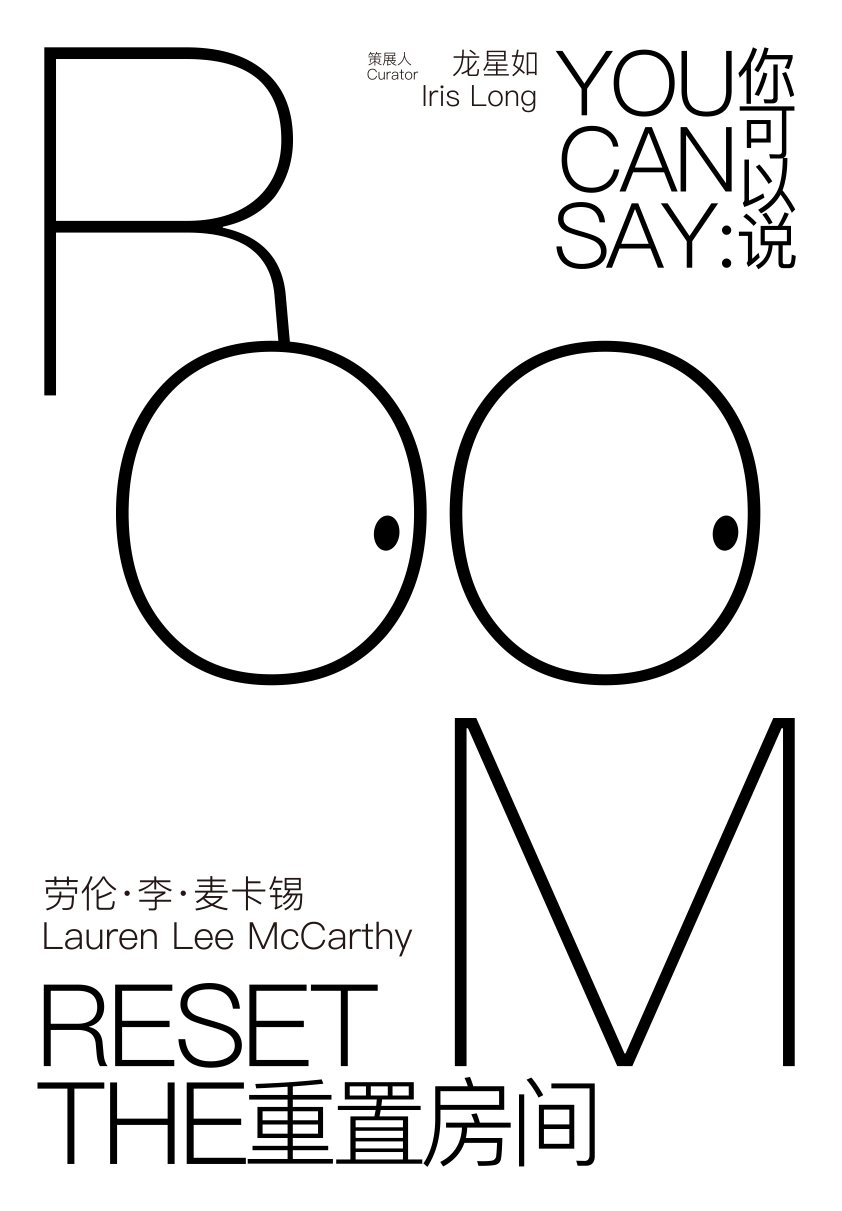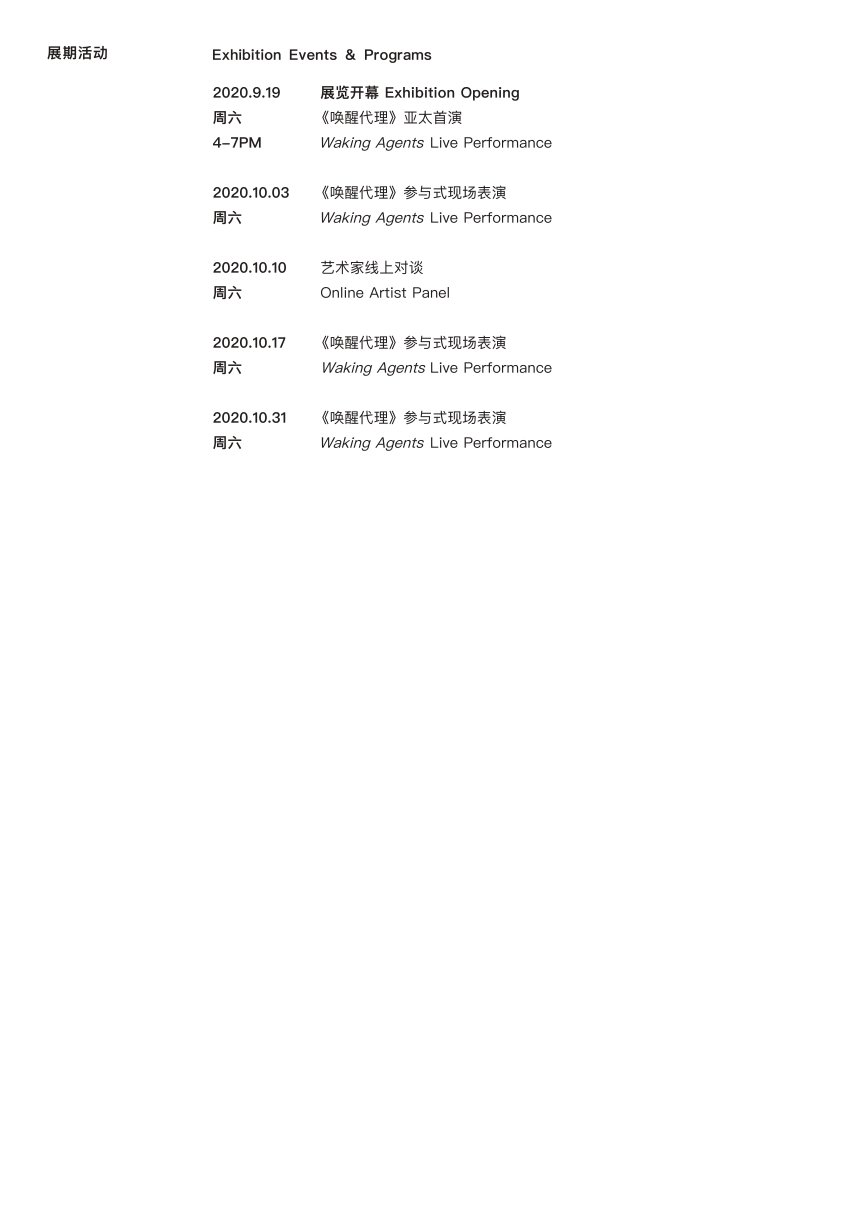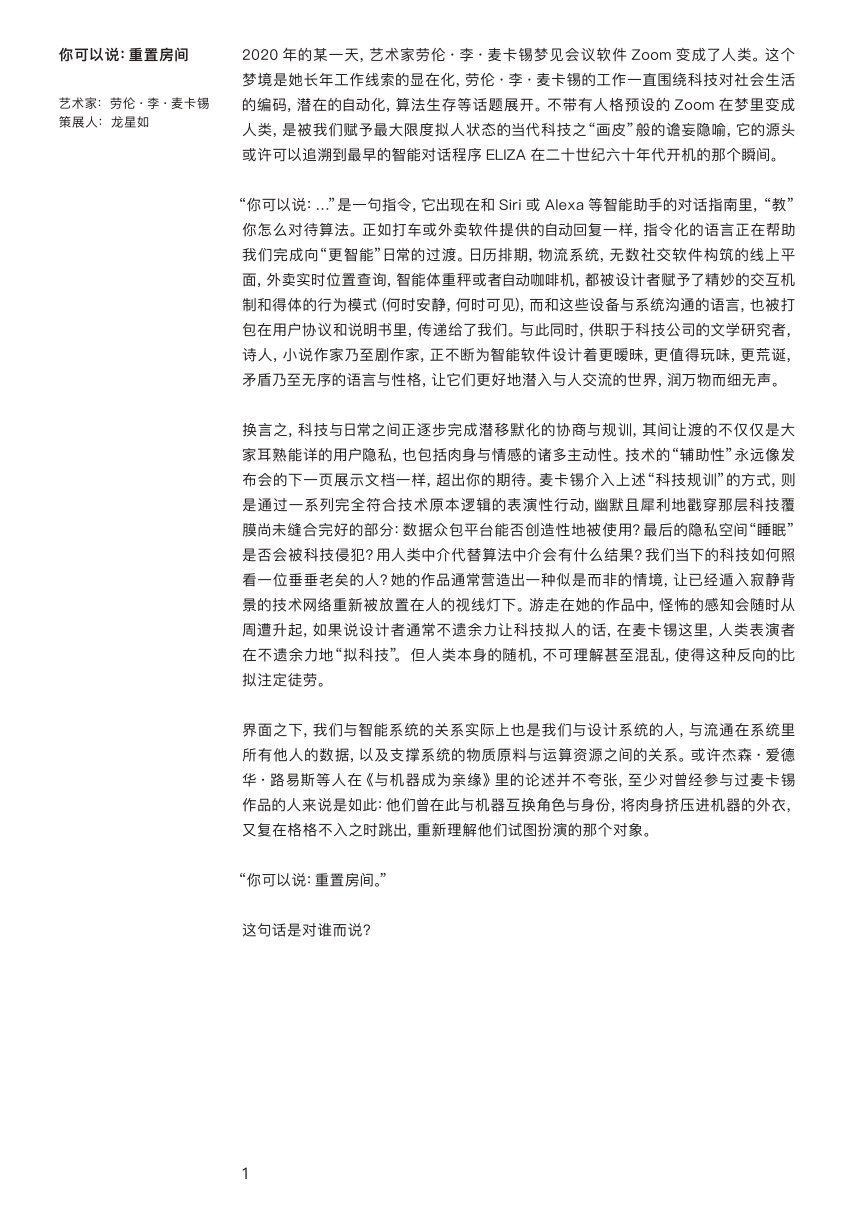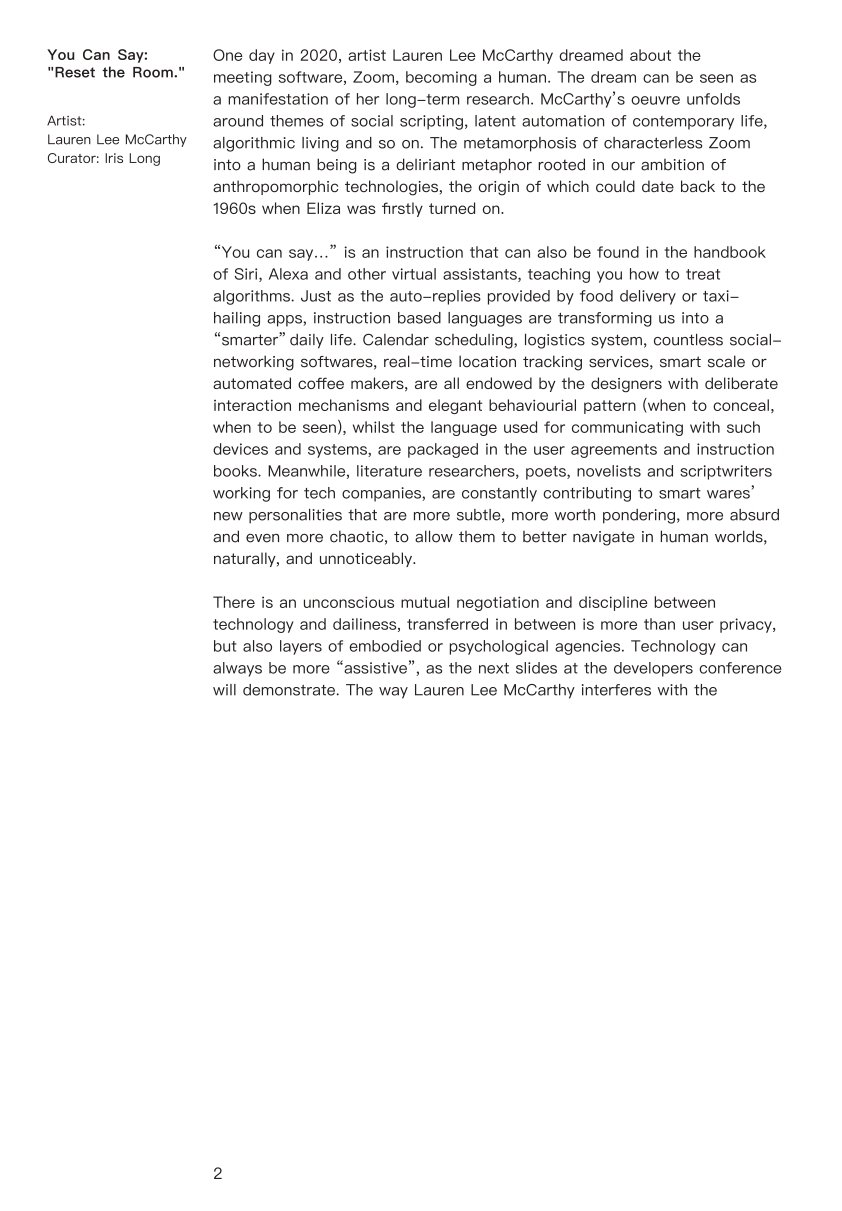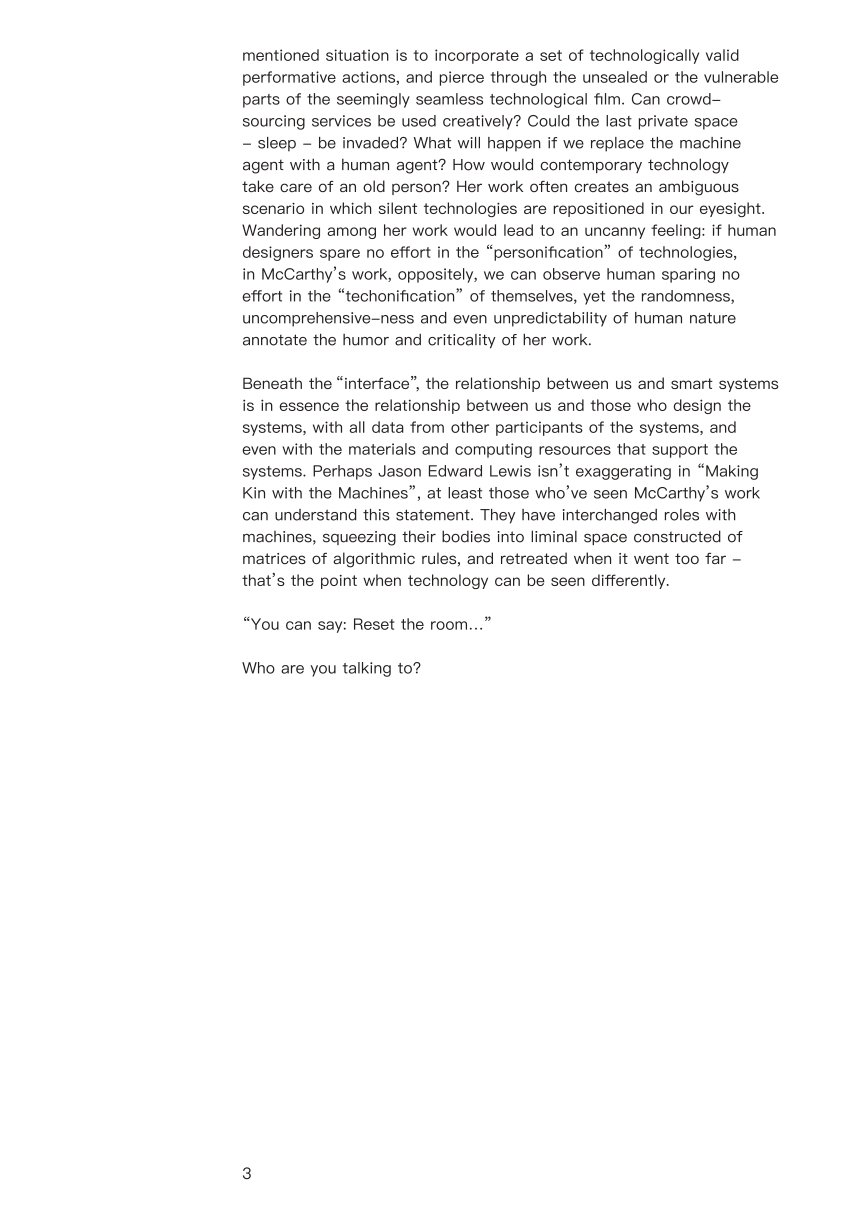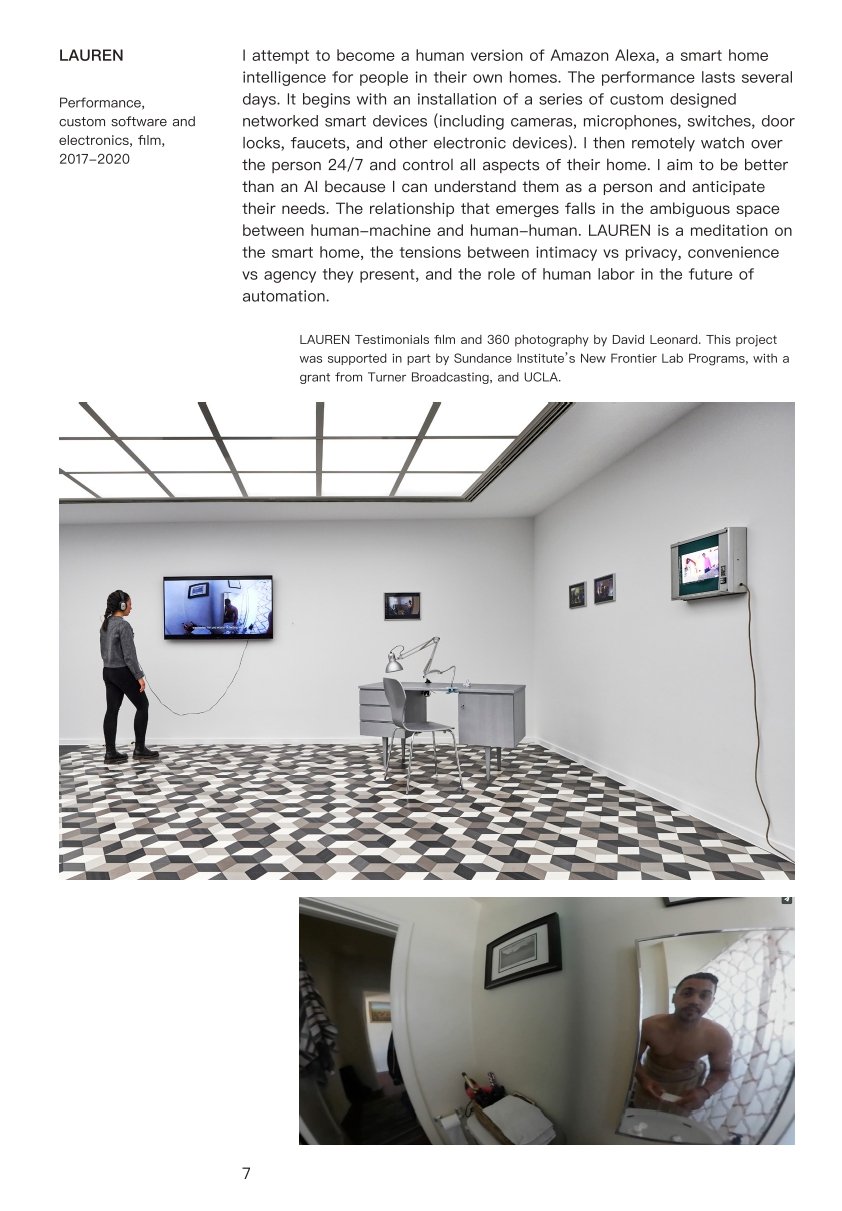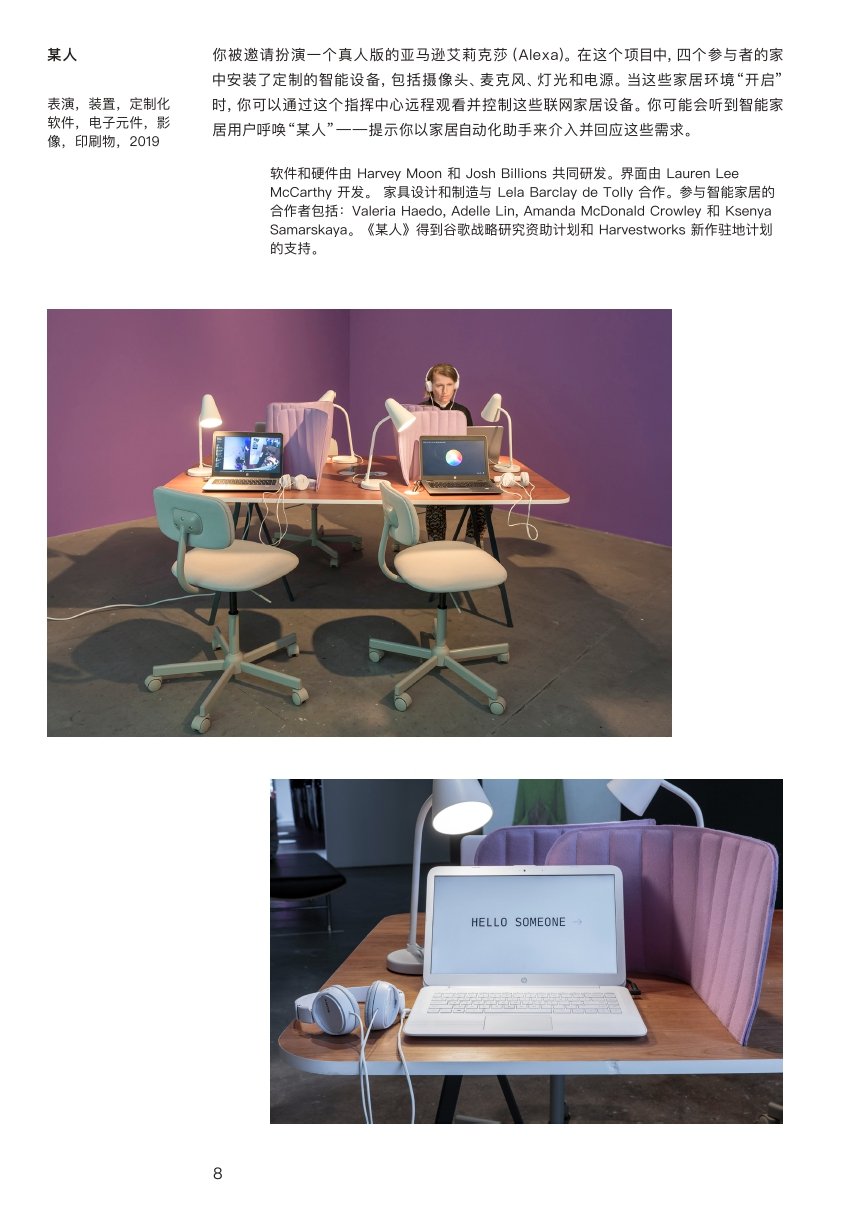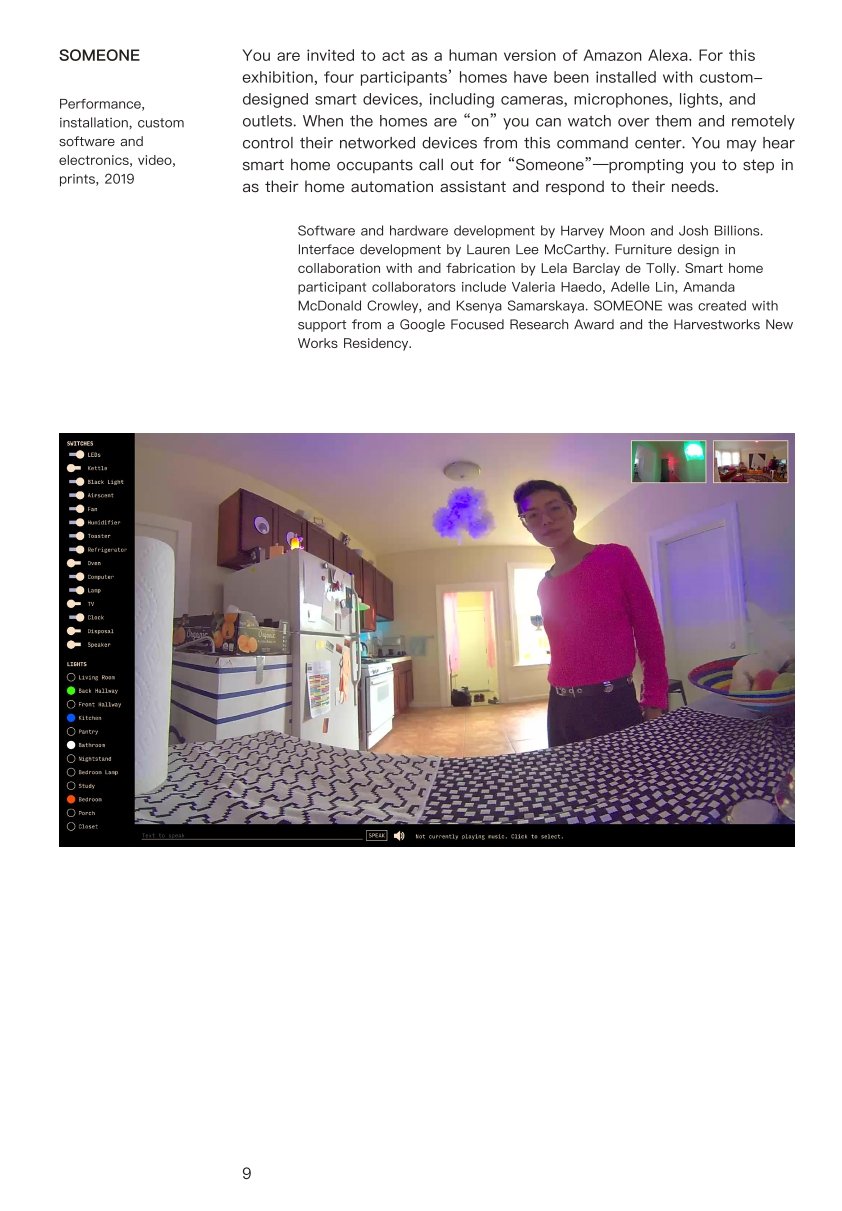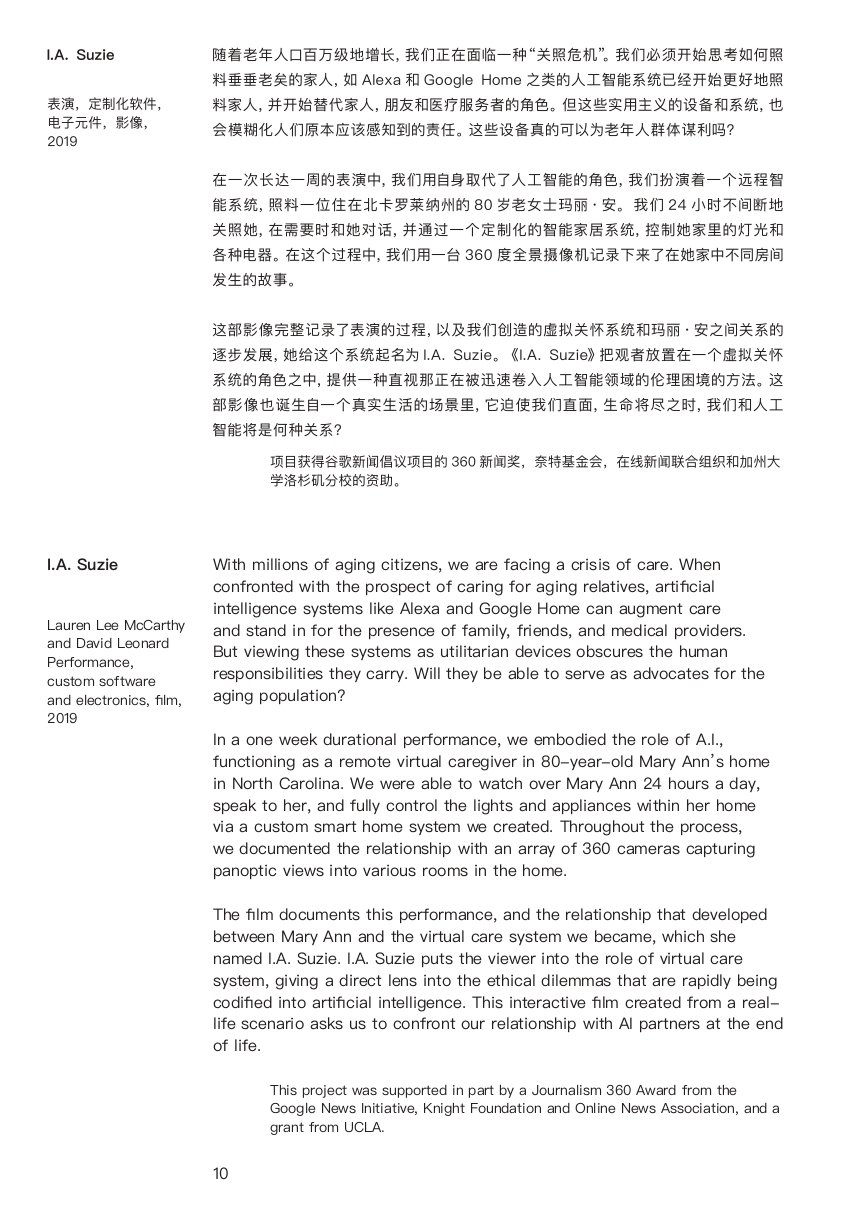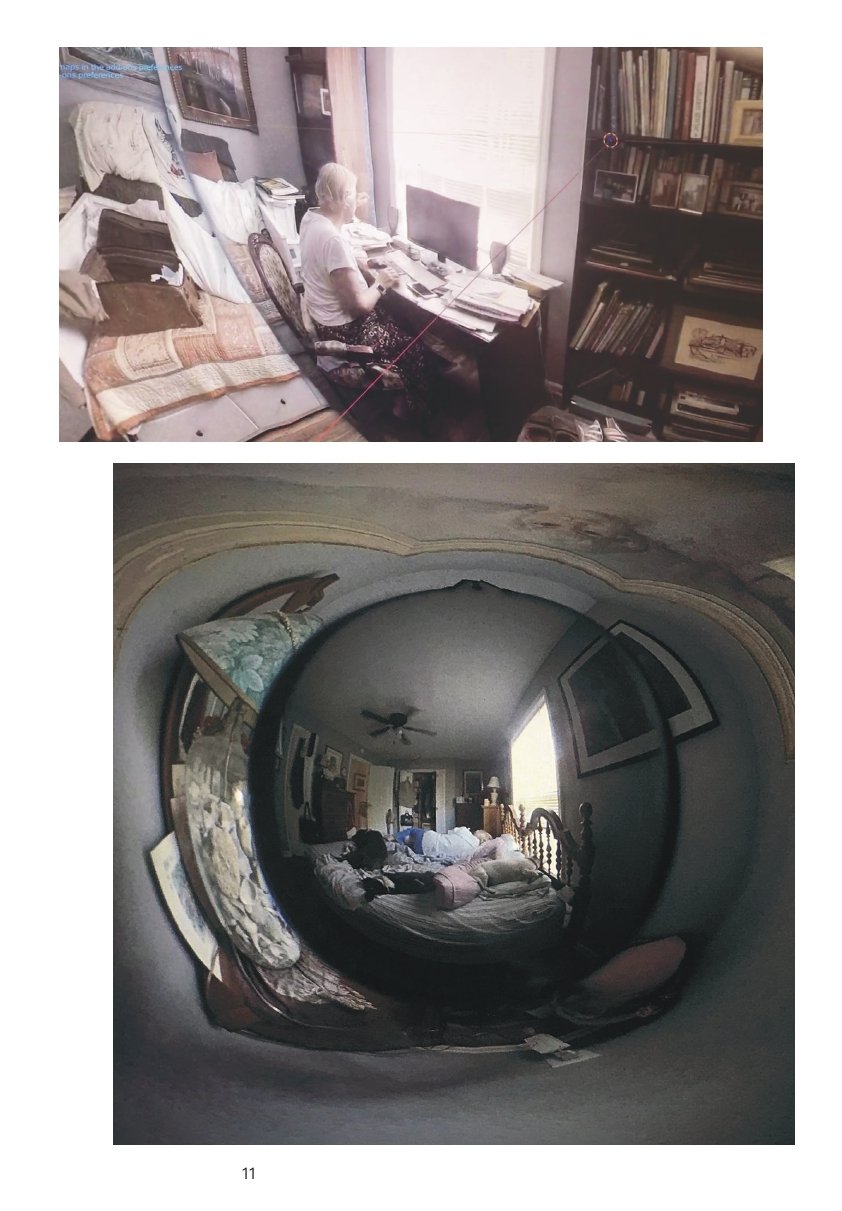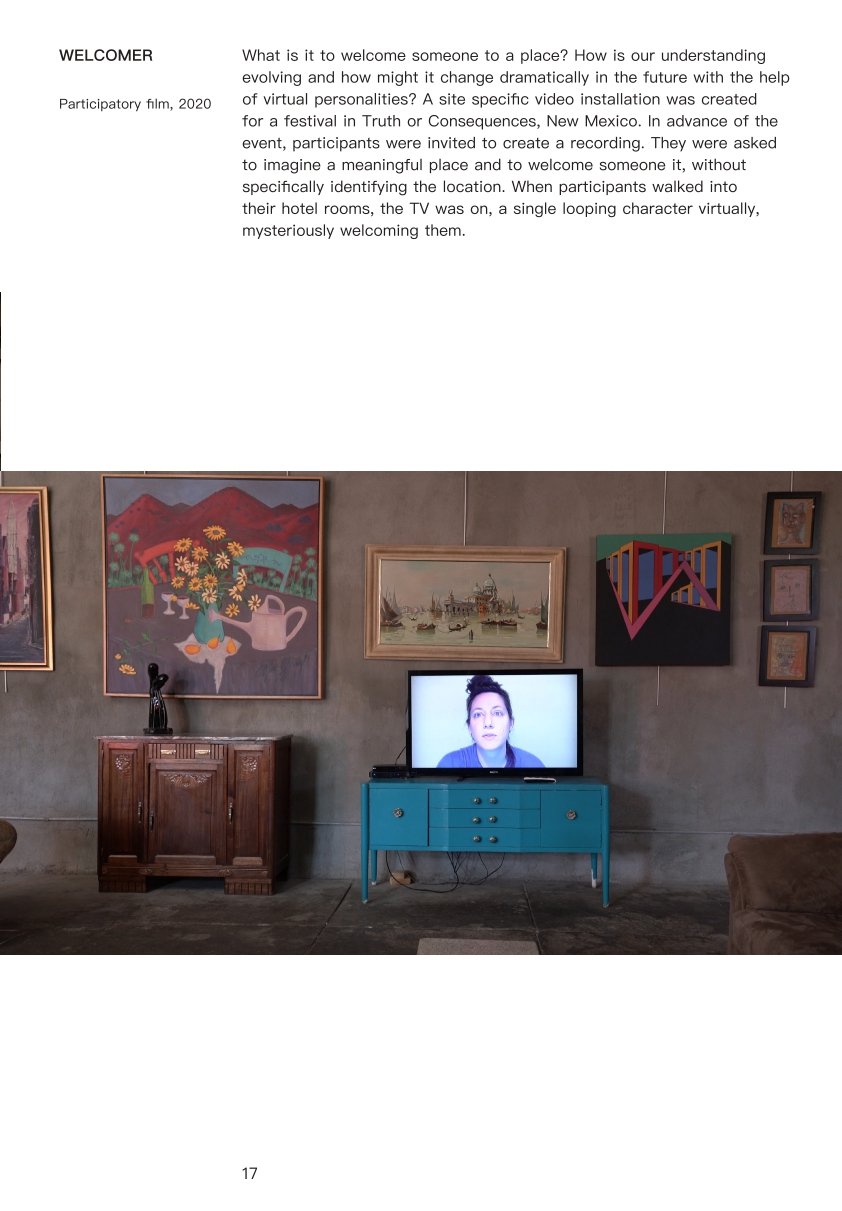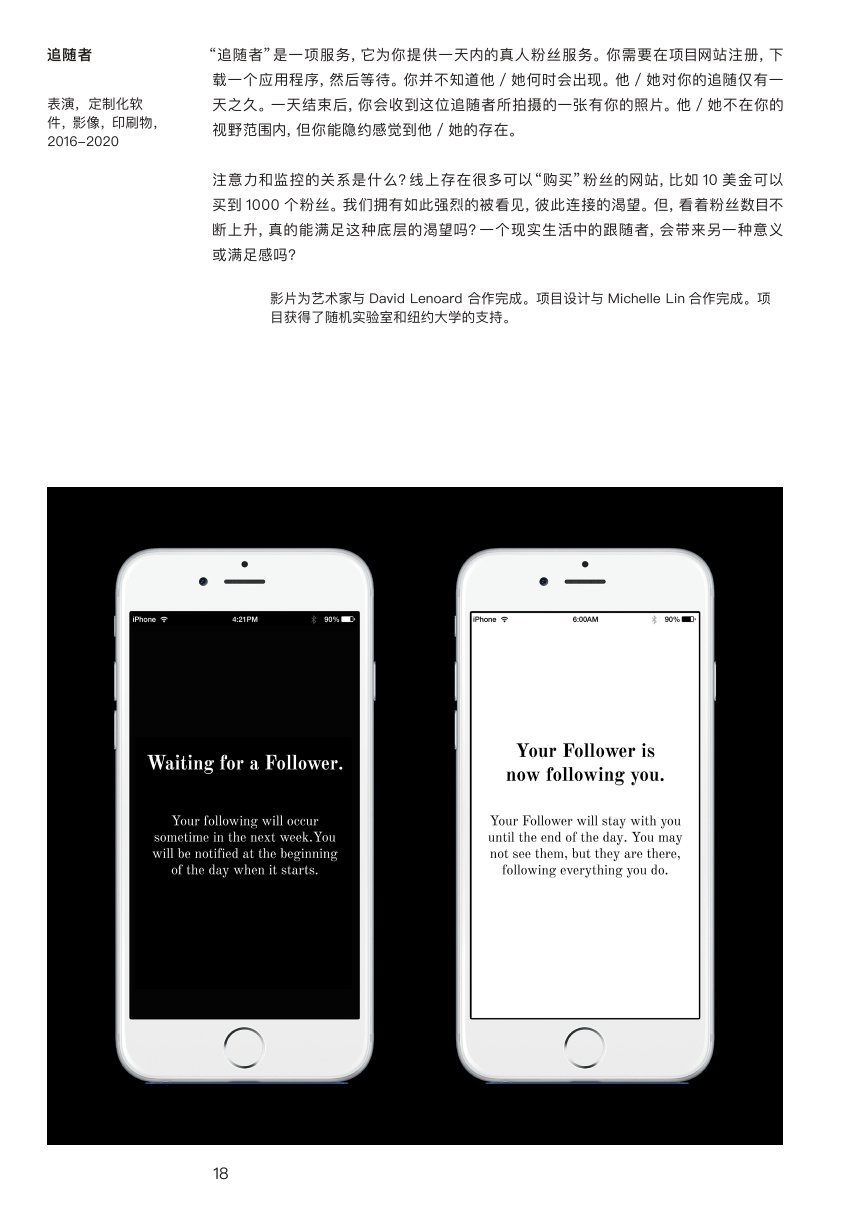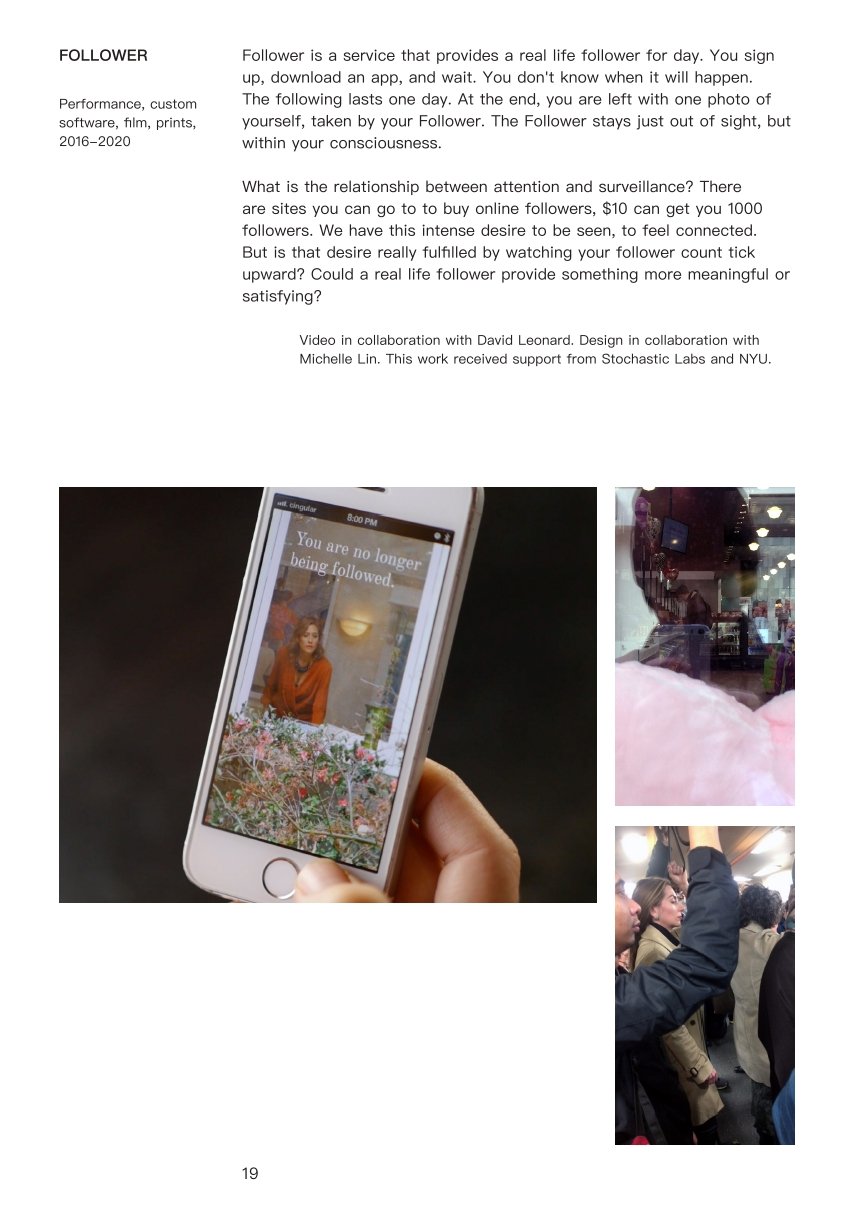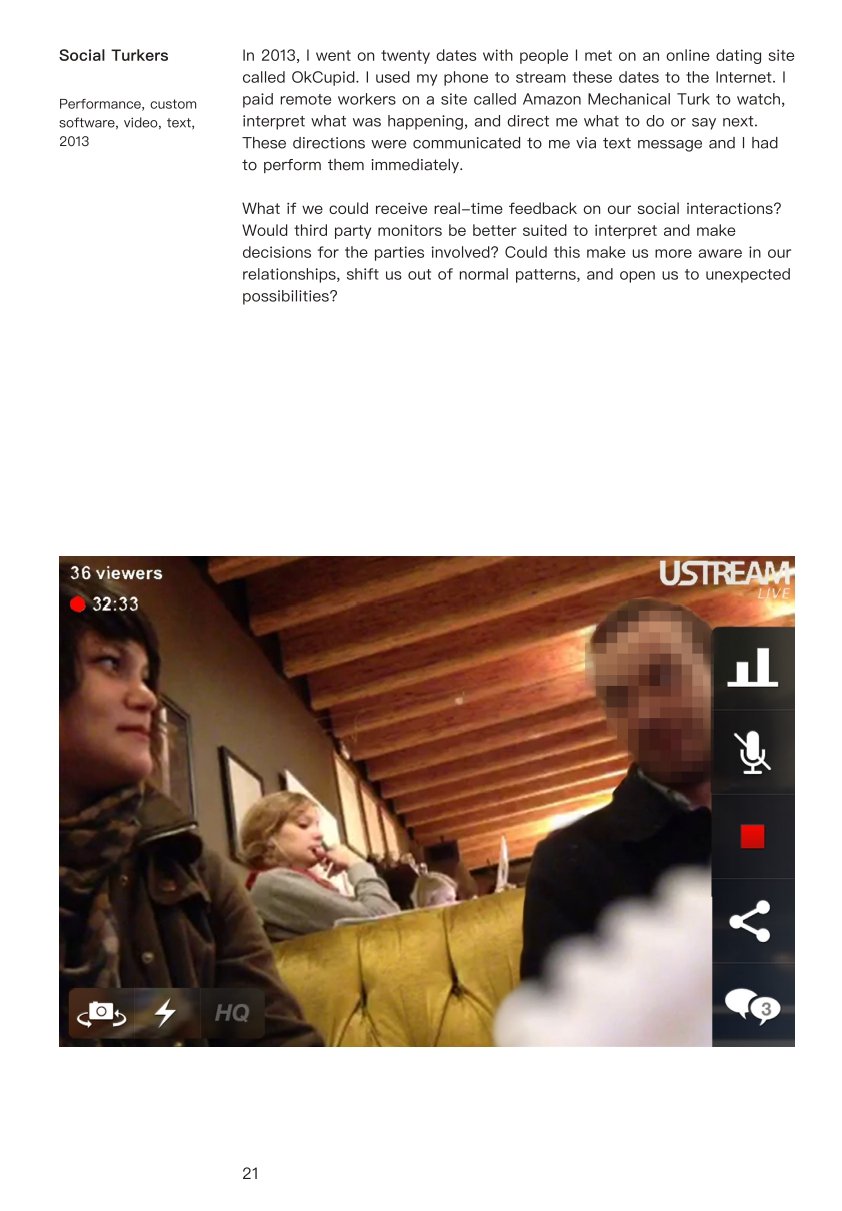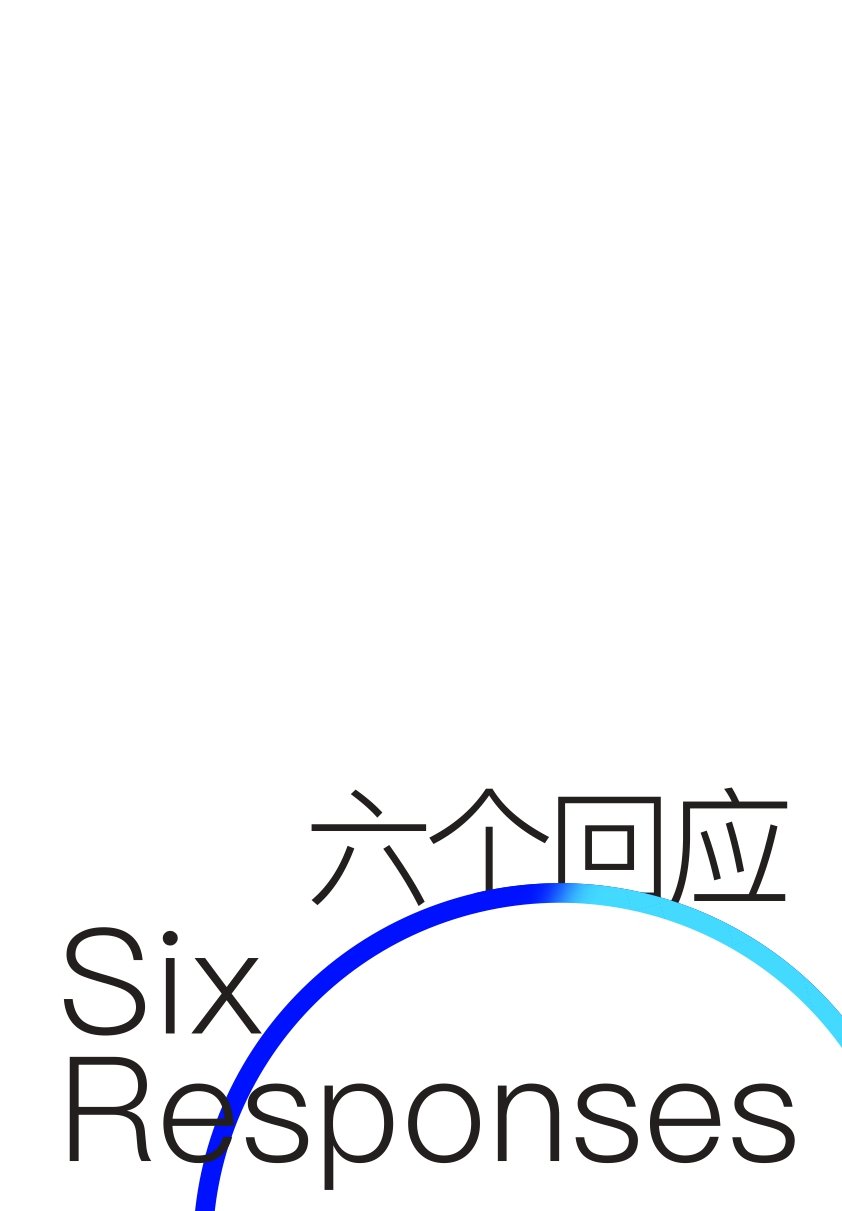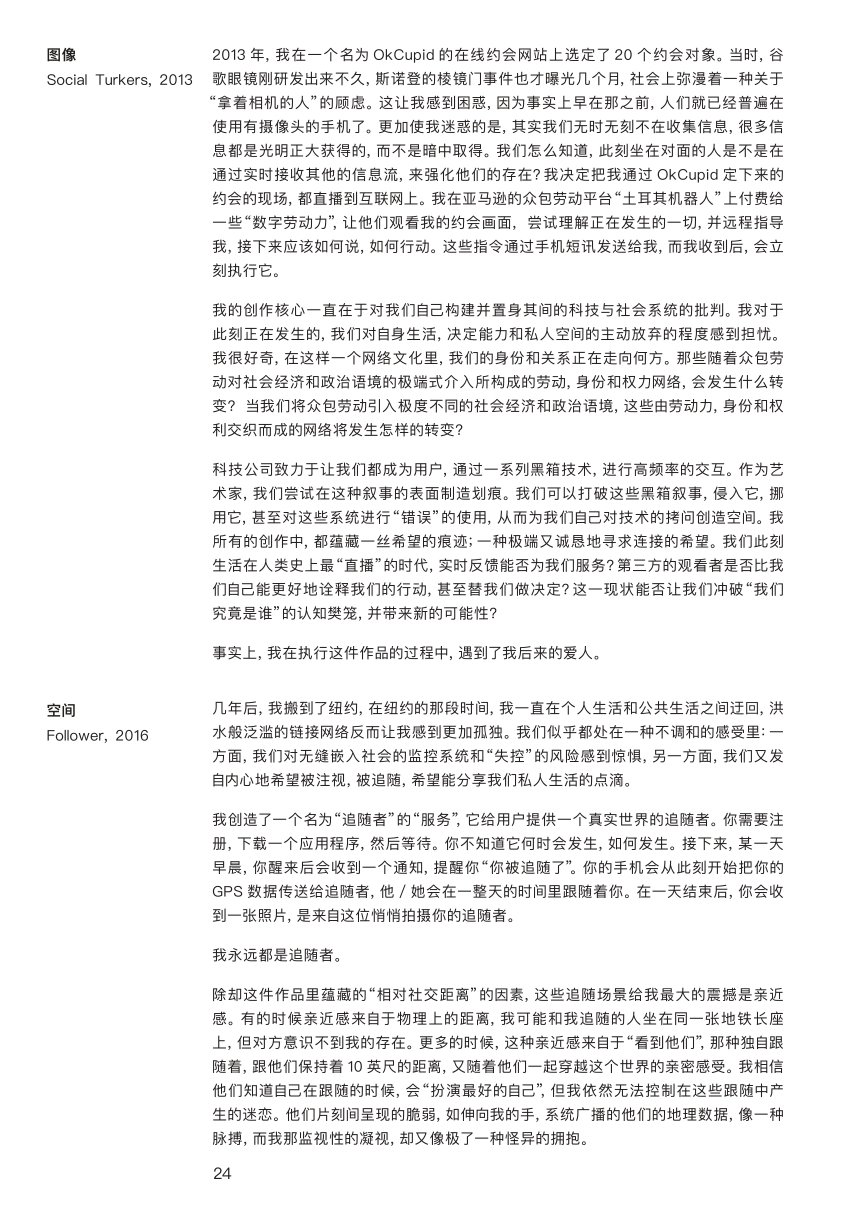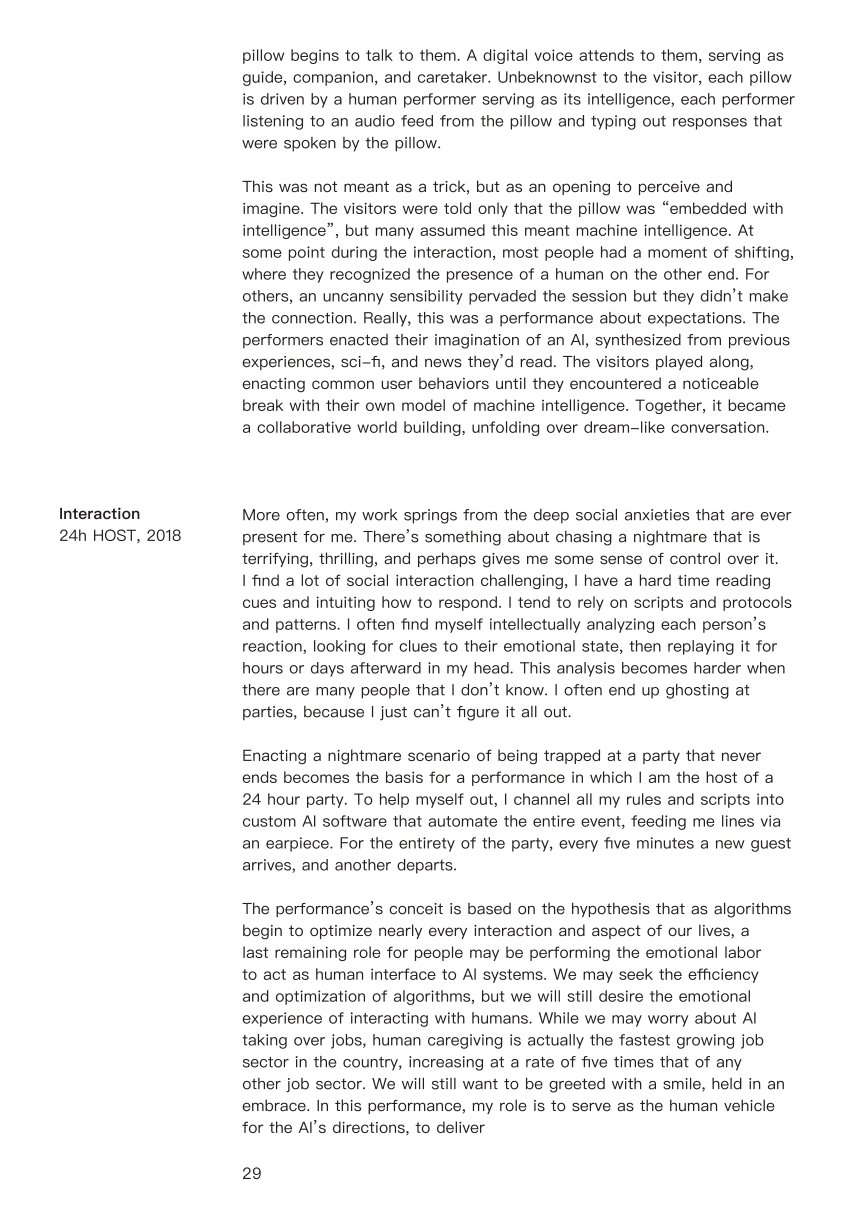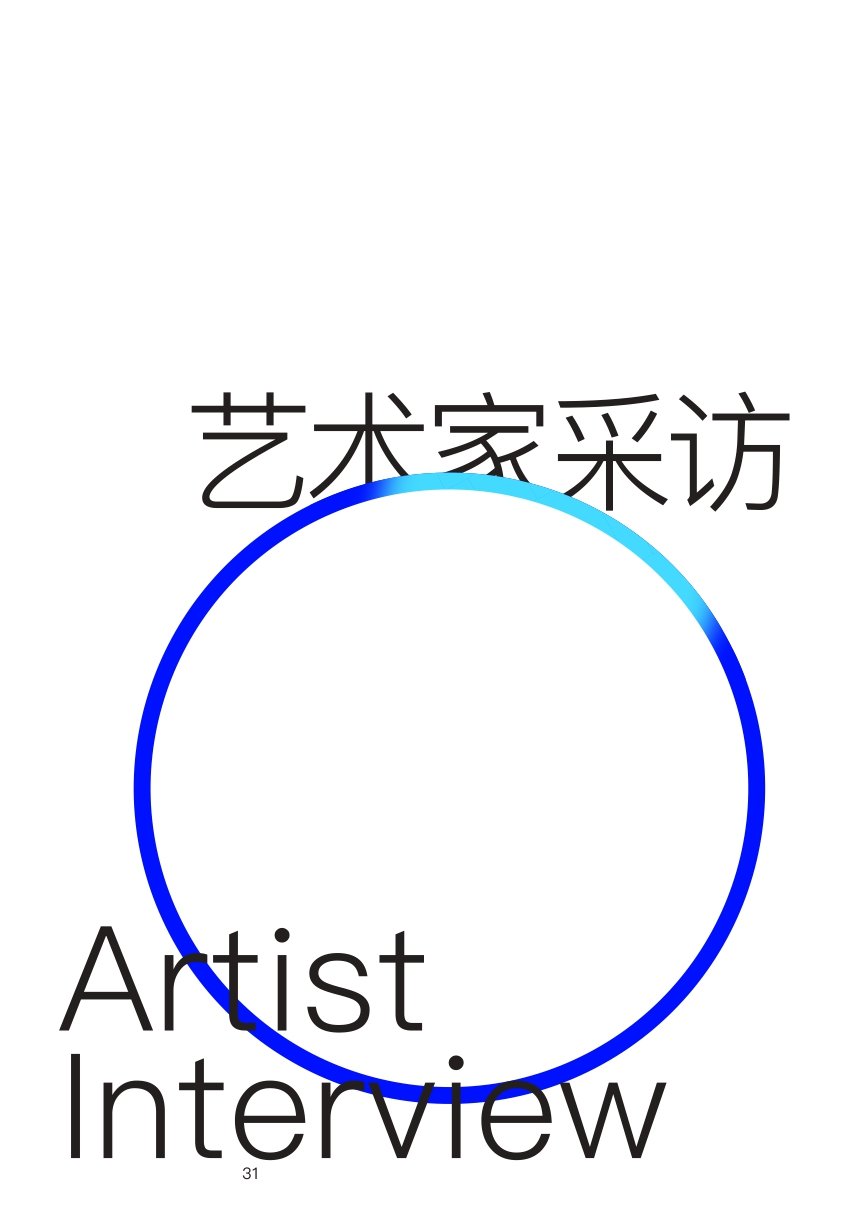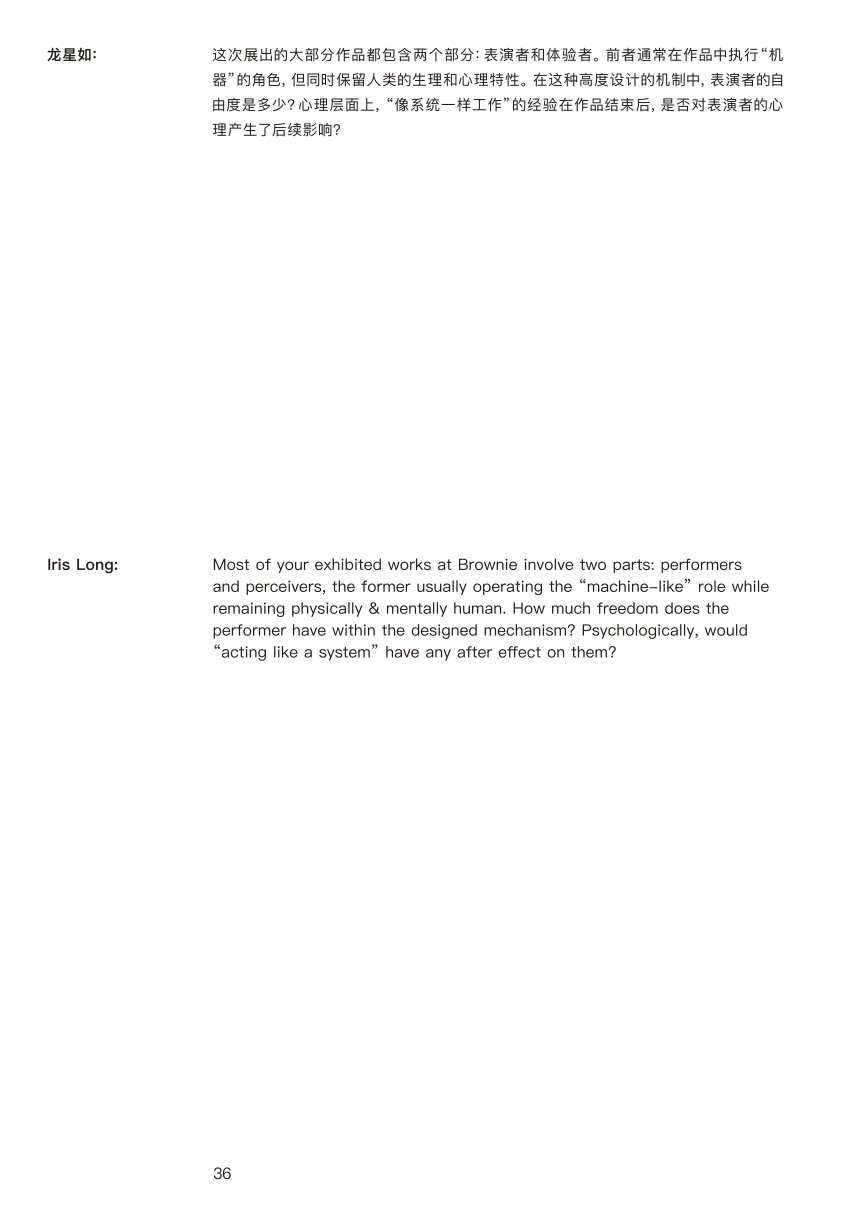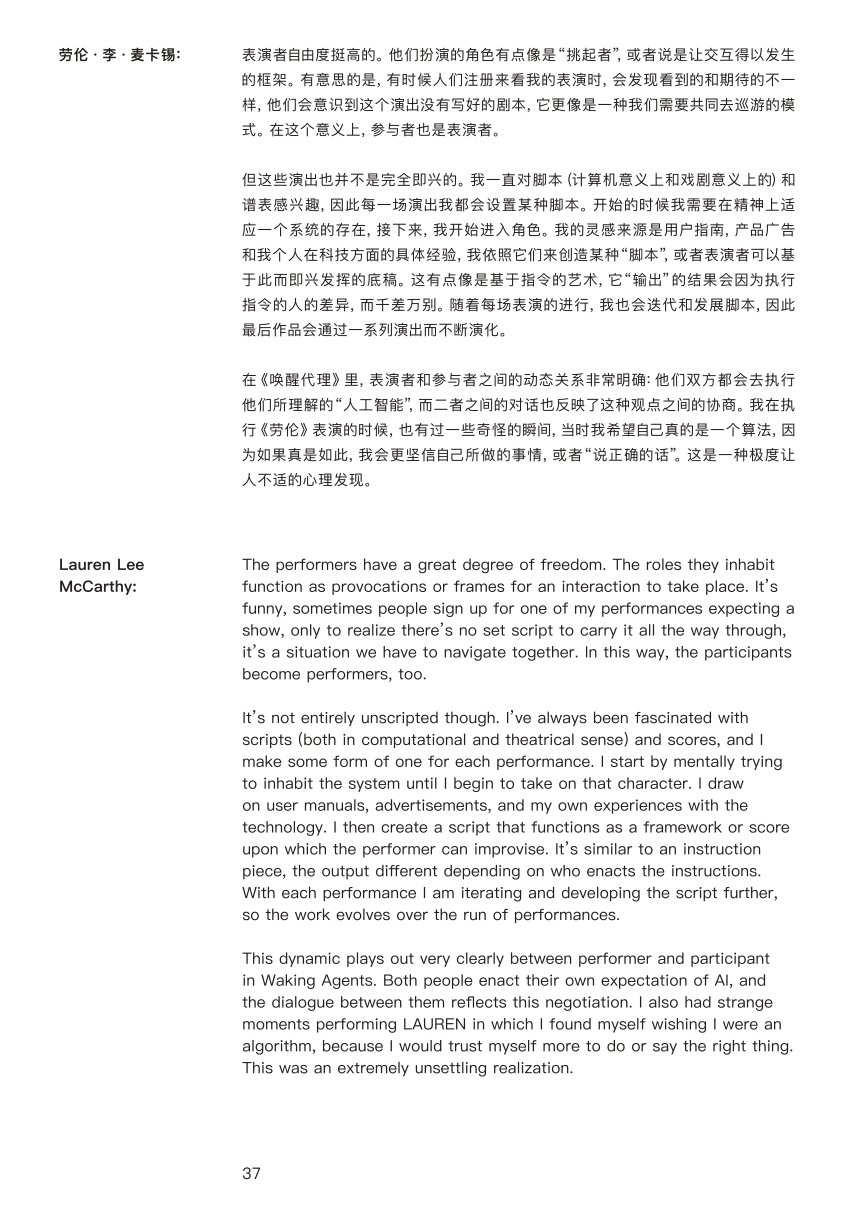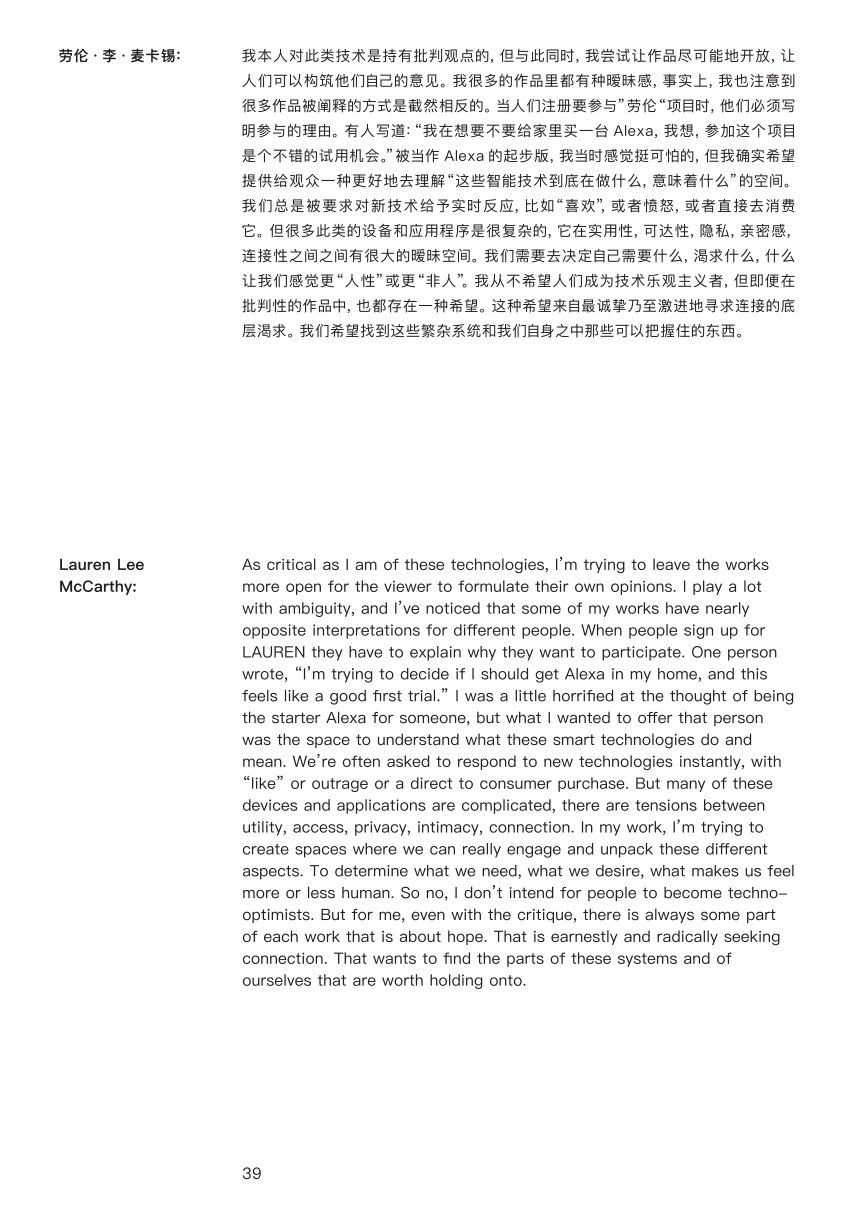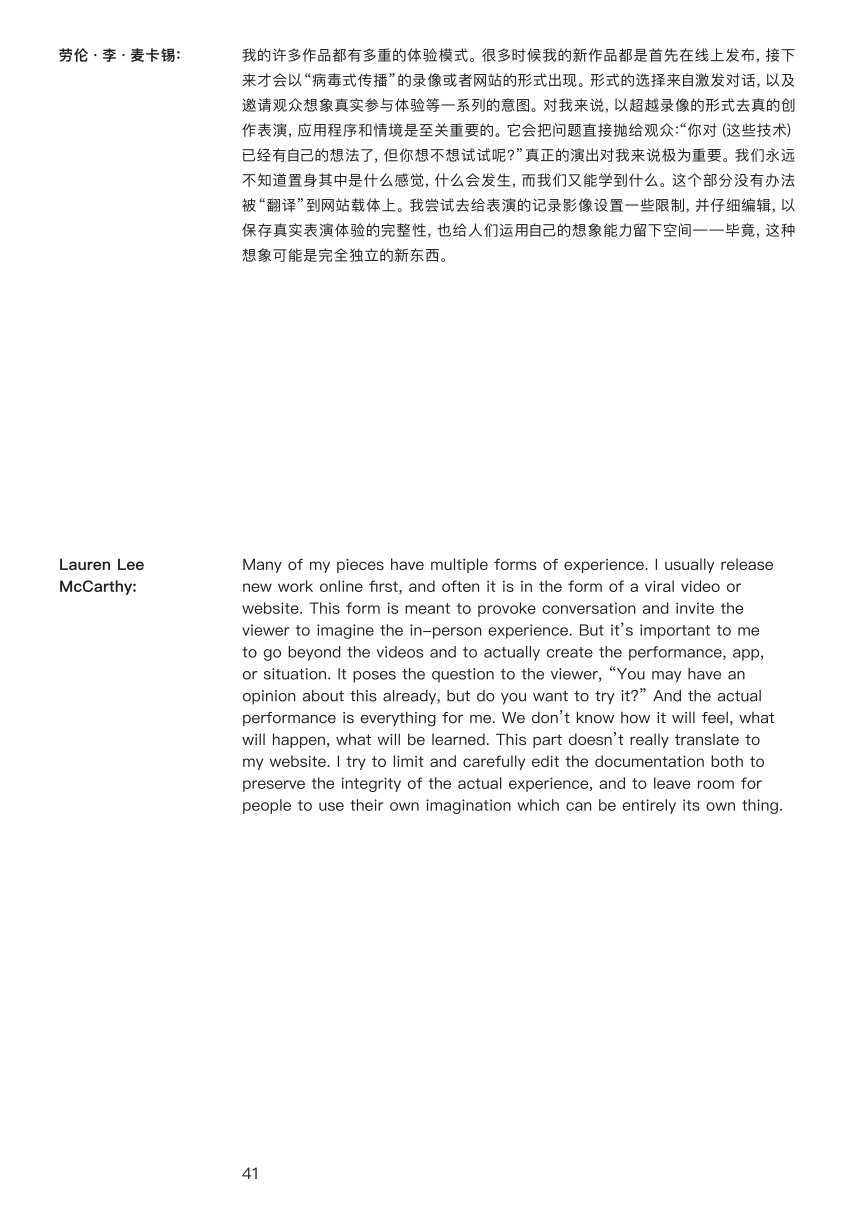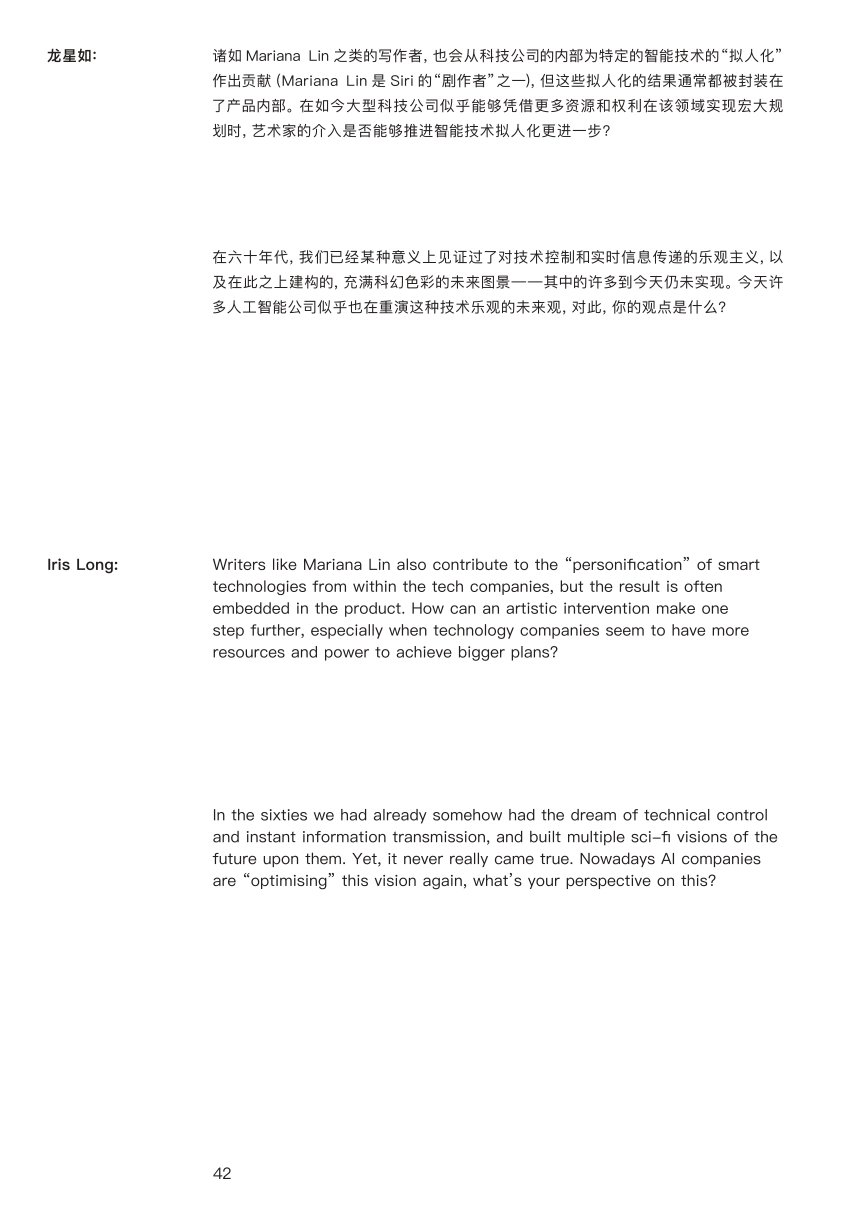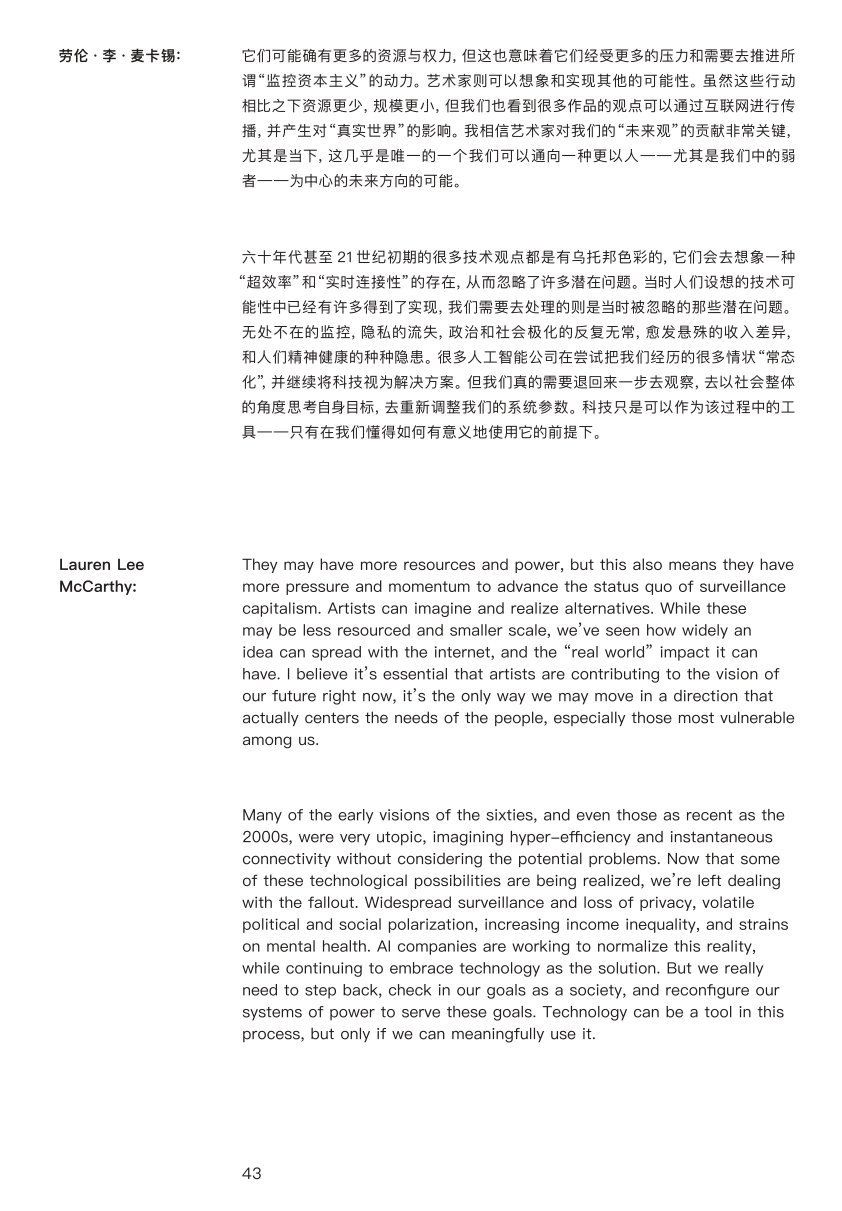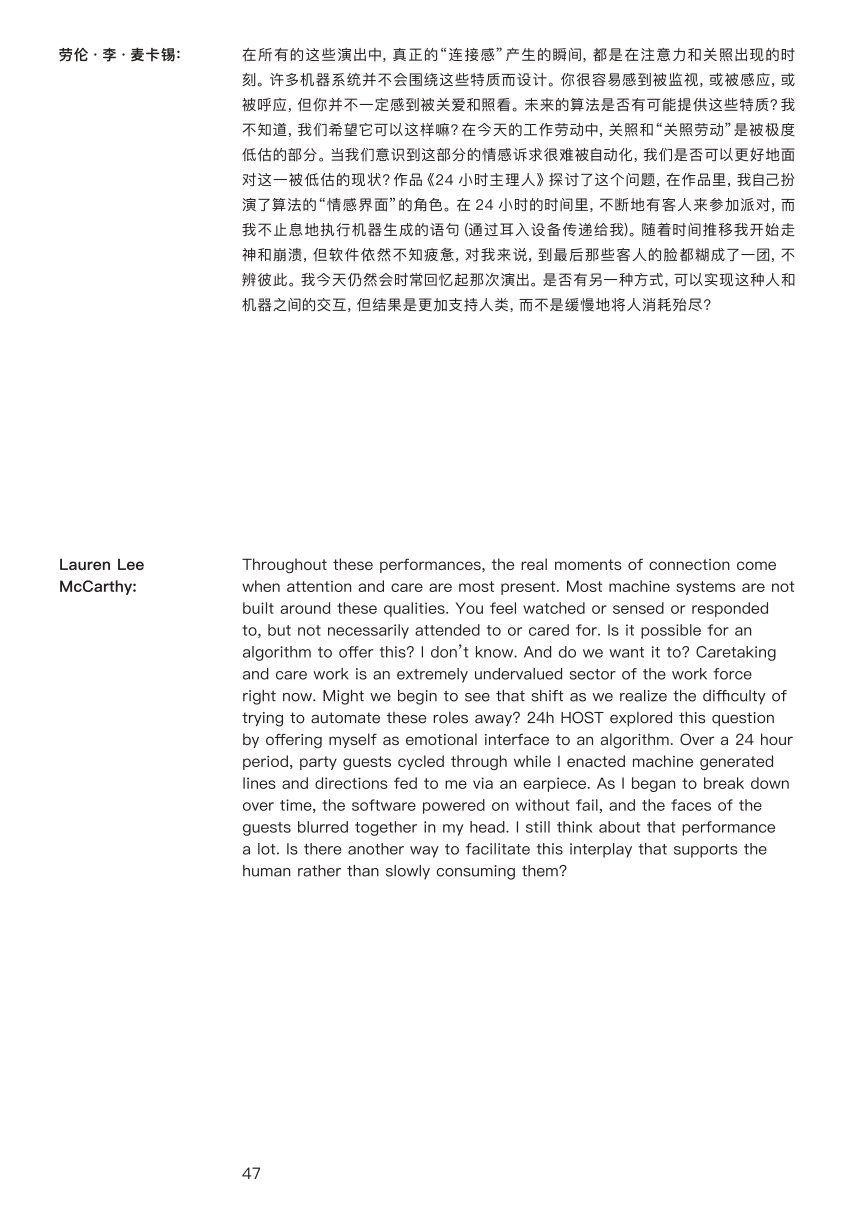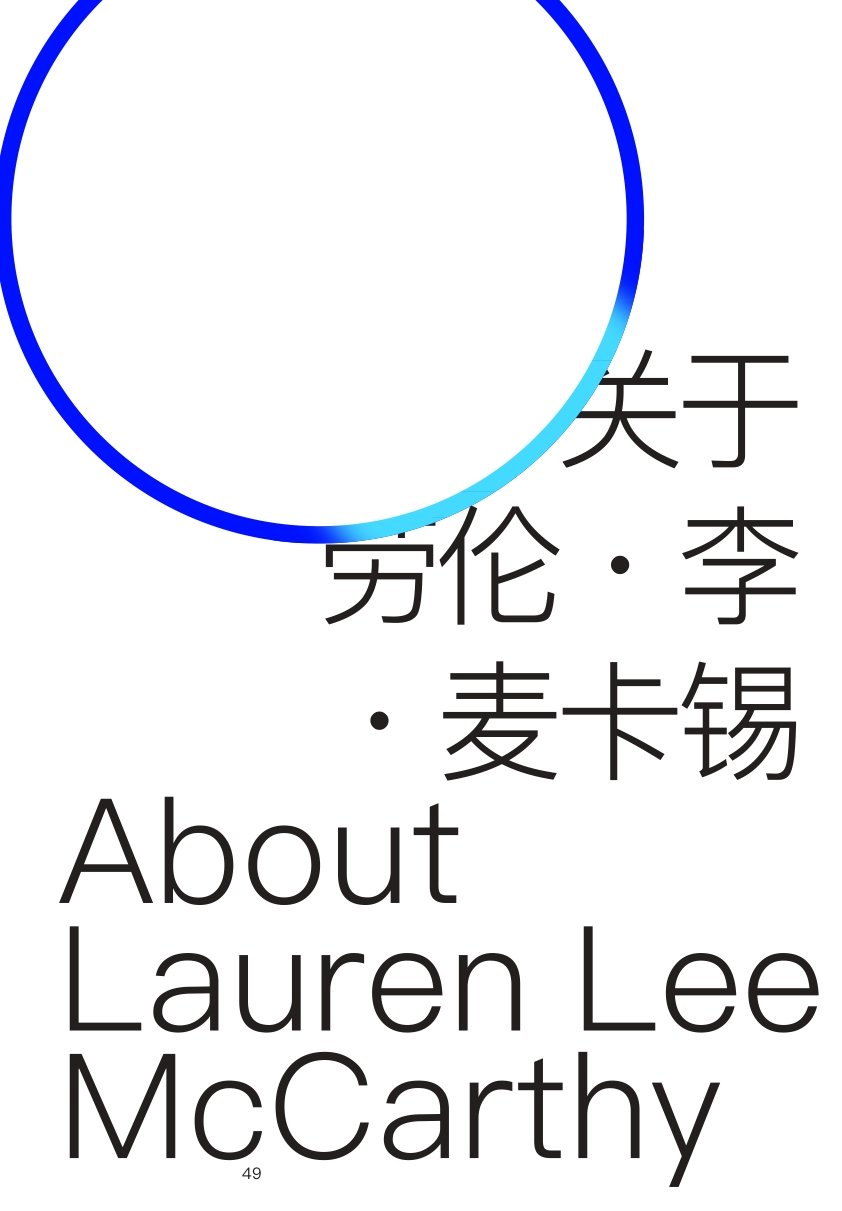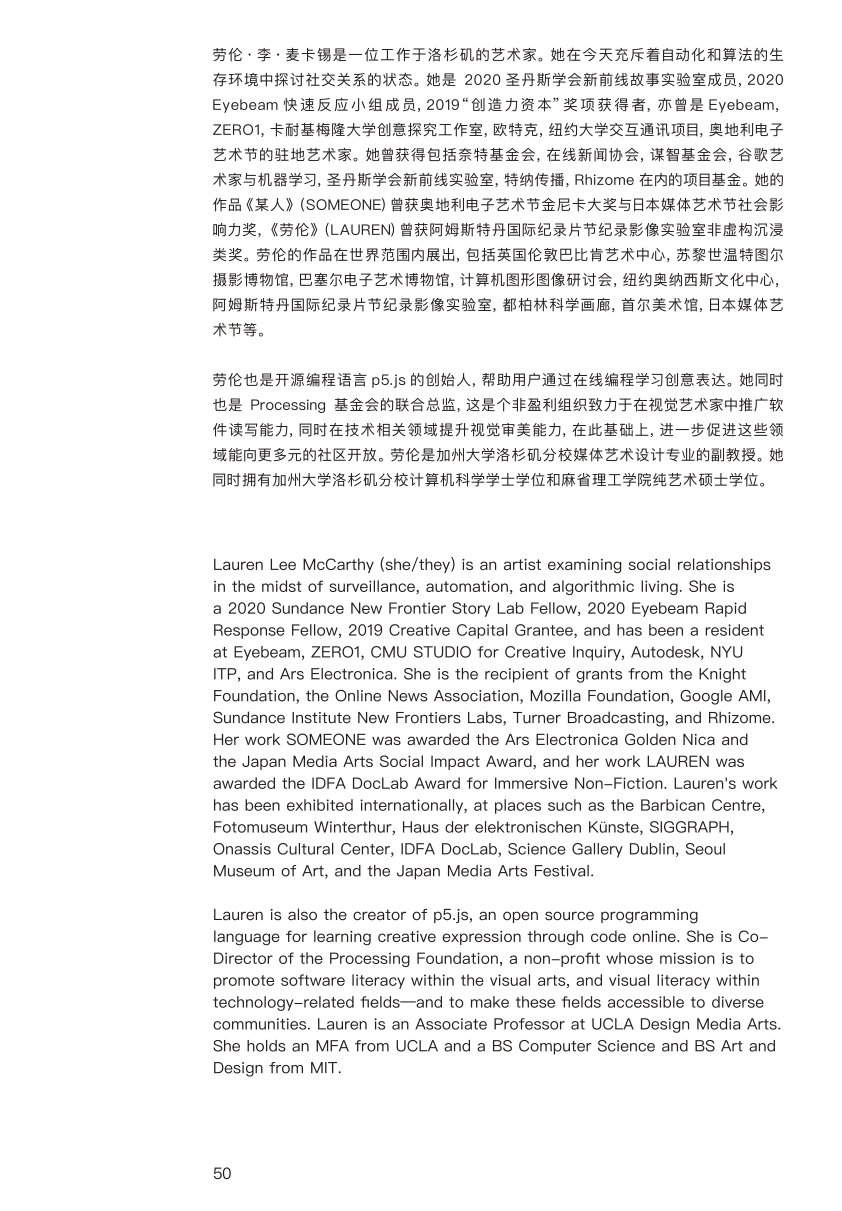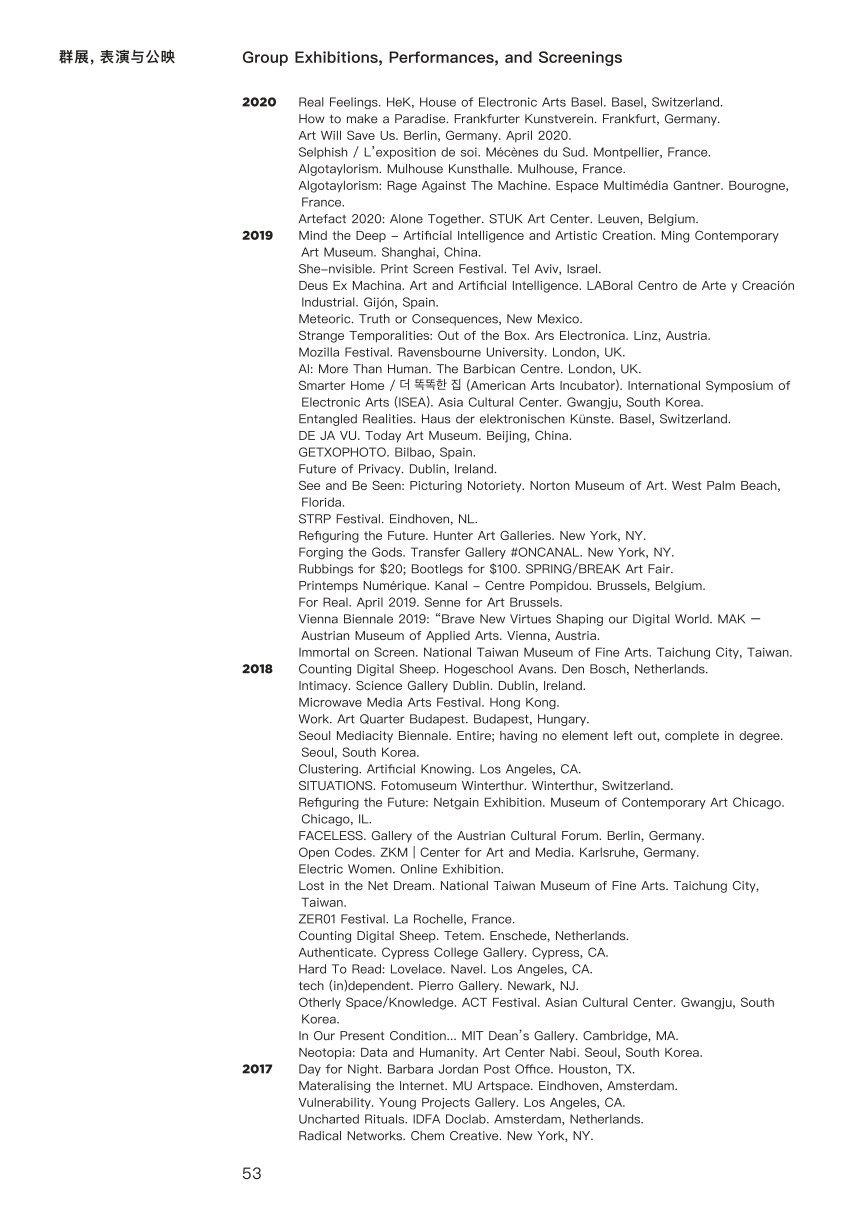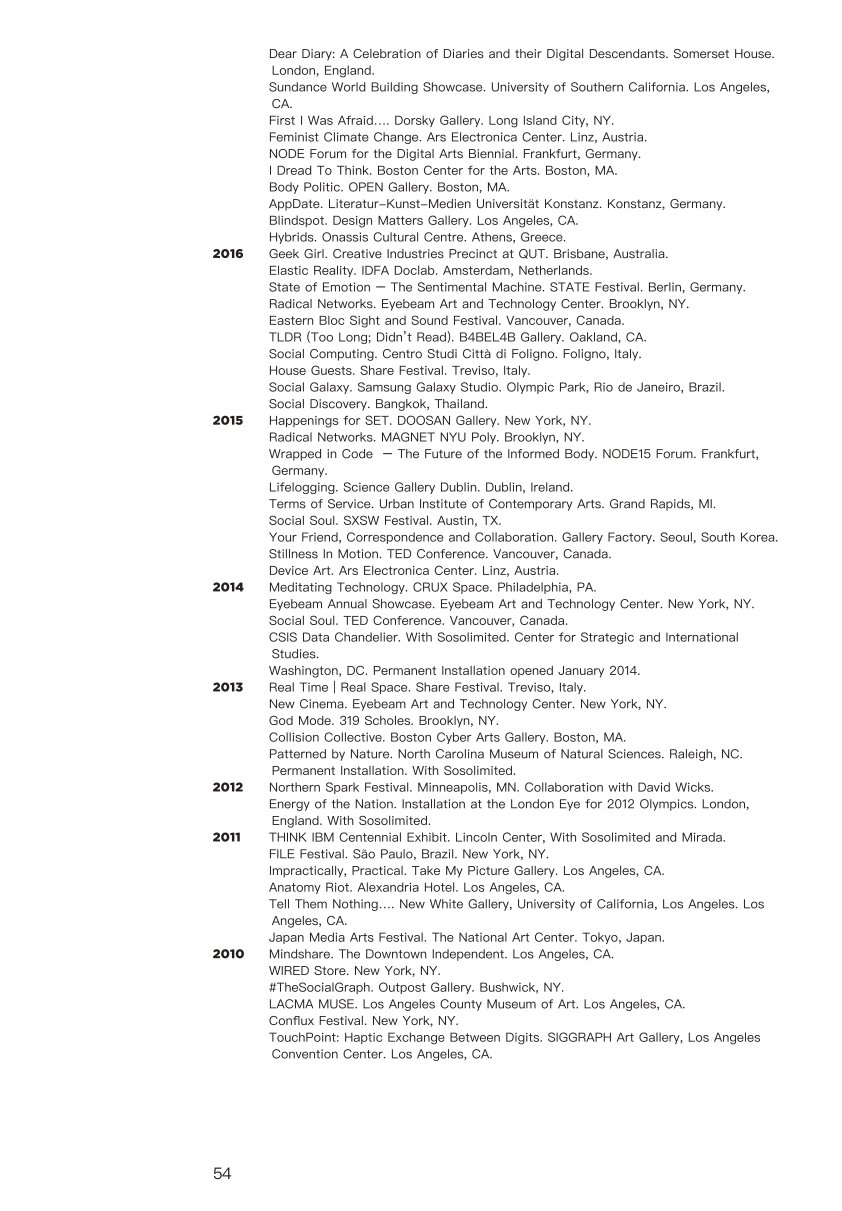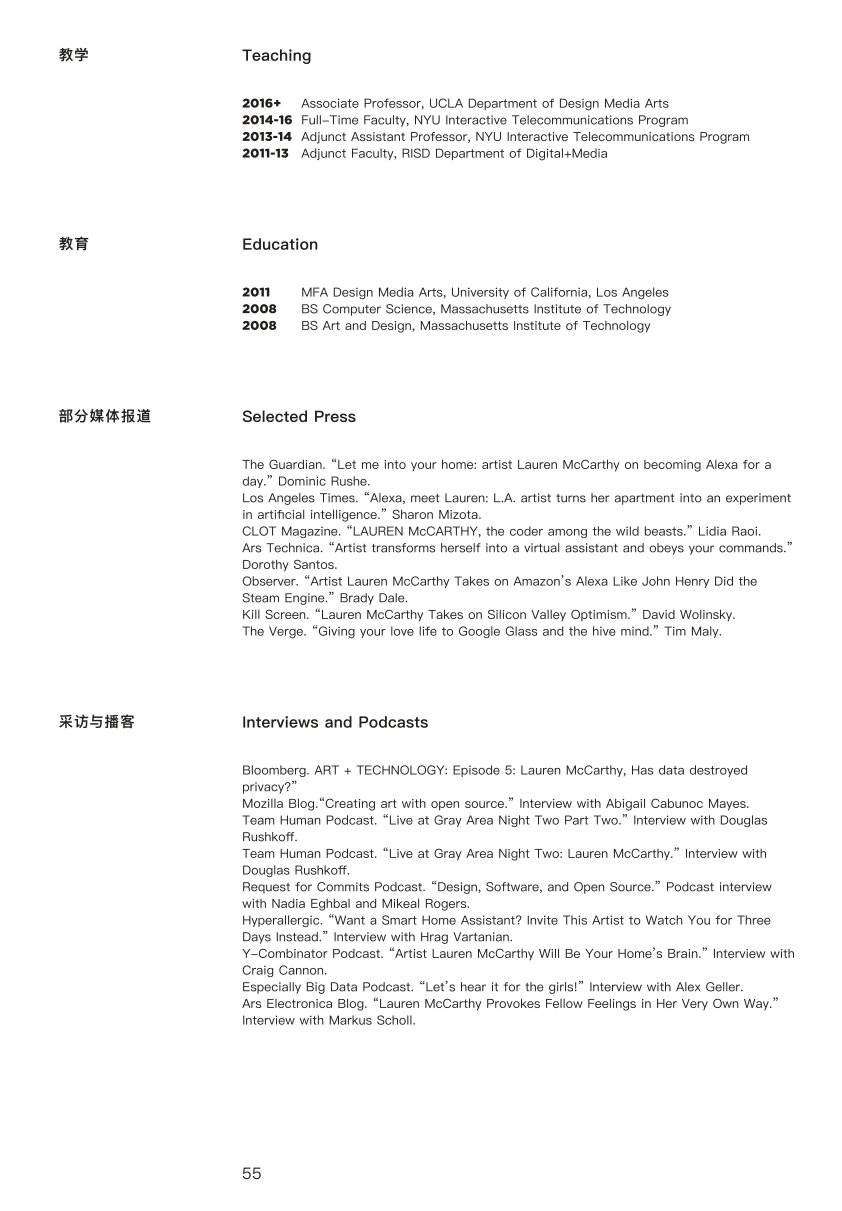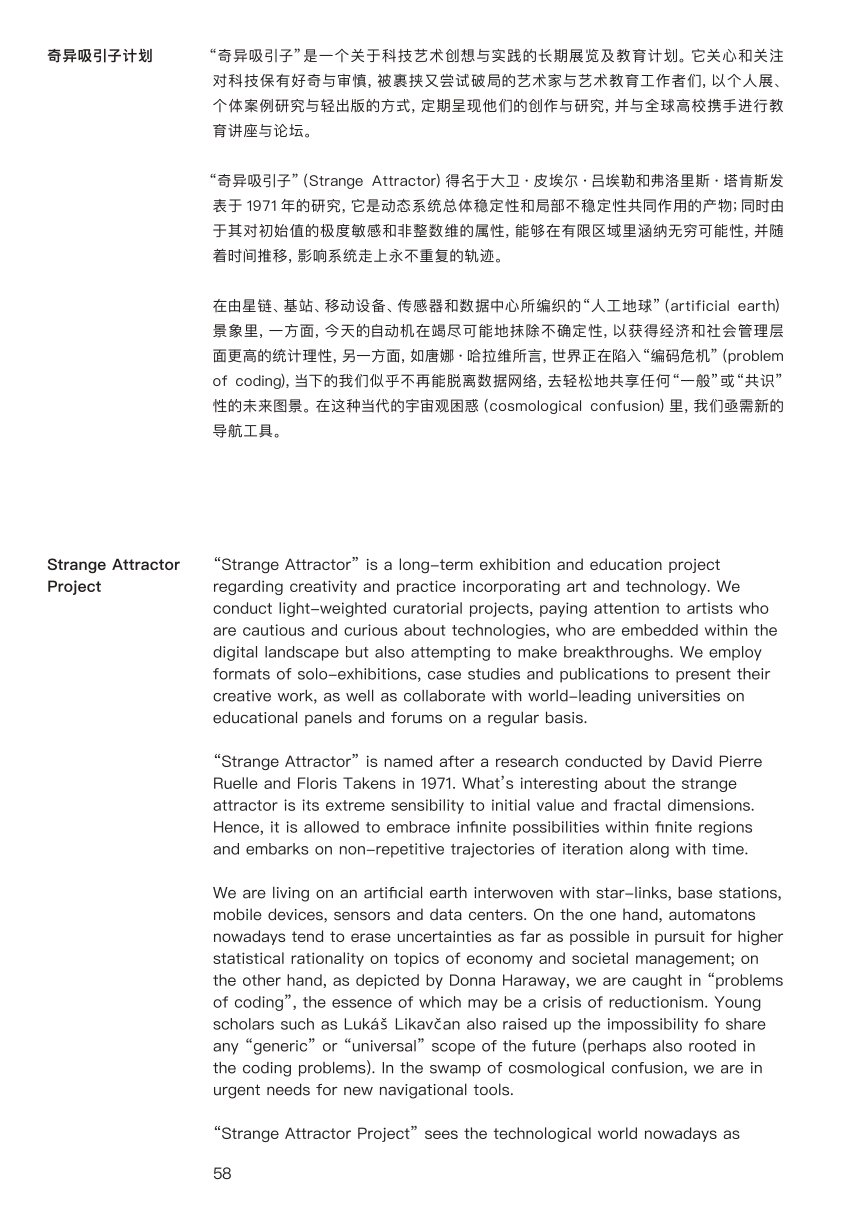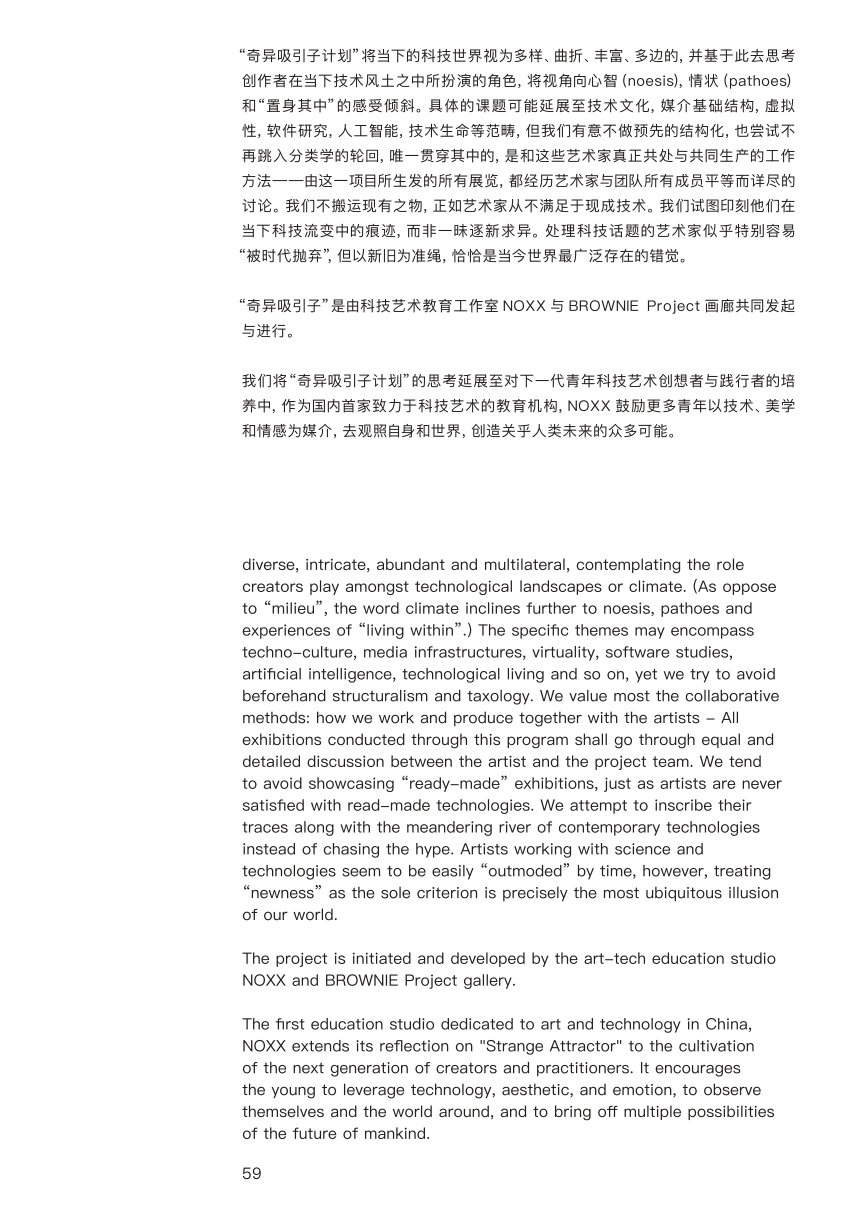You Can Say: “Reset the Room.”
Lauren Lee McCarthy
One day in 2020, artist Lauren Lee McCarthy dreamed about the meeting software, Zoom, becoming a human. The dream can be seen as a manifestation of her long-term research. McCarthy’s oeuvre unfolds around themes of social scripting, latent automation of contemporary life, algorithmic living and so on. The metamorphosis of characterless Zoom into a human being is a deliriant metaphor rooted in our ambition of anthropomorphic technologies, the origin of which could date back to the 1960s when Eliza was firstly turned on.
“You can say…” is an instruction that can also be found in the handbook of Siri, Alexa and other virtual assistants, teaching you tow to treat algorithms. Just as the auto-replies provided by food delivery or taxi-hailing apps, instruction based languages are transforming us into a “smarter” daily life. Calendar scheduling, logistics system, countless social-networking softwares, real-time location tracking services, smart scale or automated coffee makers, are all endowed by the designers with deliberate interaction mechanisms and elegant behavourial pattern (when to conceal, when to be seen), whilst the language used for communicating with such devices and systems, are packaged in the user agreements and instruction books. Meanwhile, literature researchers, poets, novelists and scriptwriters working for tech companies, are constantly contributing to smart wares’ new personalities that are more subtle, more worth pondering, more absurd and even more chaotic, to allow them to better navigate in human worlds, naturally, and unnoticeably.
There is an unconscious mutual negotiation and discipline between technology and dailiness, transferred in between is more than user privacy, but also layers of embodied or psychological agencies. Technology can always be more “assistive”, as the next slides at the developers conference will demonstrate. The way Lauren Lee McCarthy interferes with the mentioned situation is to incorporate a set of technologically valid performative actions, and pierce through the unsealed or the vulnerable parts of the seemingly seamless technological film. Can crowdsourcing services be used creatively? Could the last private space-sleep-be invaded? What will happen if we replace the machine agent with a human agent? How would contemporary technology take care of an old person? Her work often creates an ambiguous scenario in which silent technologies are repositioned in our eyesight. Wandering among her work would lead to an uncanny feeling: if human designers spare no effort in the “personification” of technologies, in McCarthy’s work, oppositely, we can observe human sparing no effort in the “techonification” of themselves, yet the randomness, uncomprehensive-ness and even unpredictability of human nature annotate the humor and criticality of her work.
Beneath the “interface”, the relationship between us and smart systems is in essence the relationship between us and those who design the systems, with all data from other participants of the systems, and even with the materials and computing resources that support the systems. Perhaps Jason Edward Lewis isn’t exaggerating in “Making Kin with the Machines”, at least those who’ve seen McCarthy’s work can understand this statement. They have interchanged roles with machines, squeezing their bodies into liminal space constructed of matrices of algorithmic rules, and retreated when it wen too far - that’s the point when technology can be seen differently.
“You can say: Reset the room…”
Who are you talking to?
